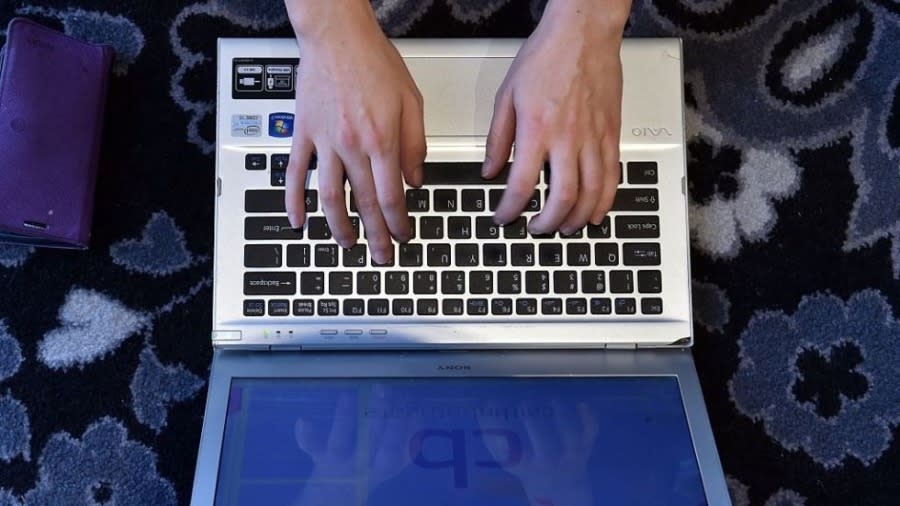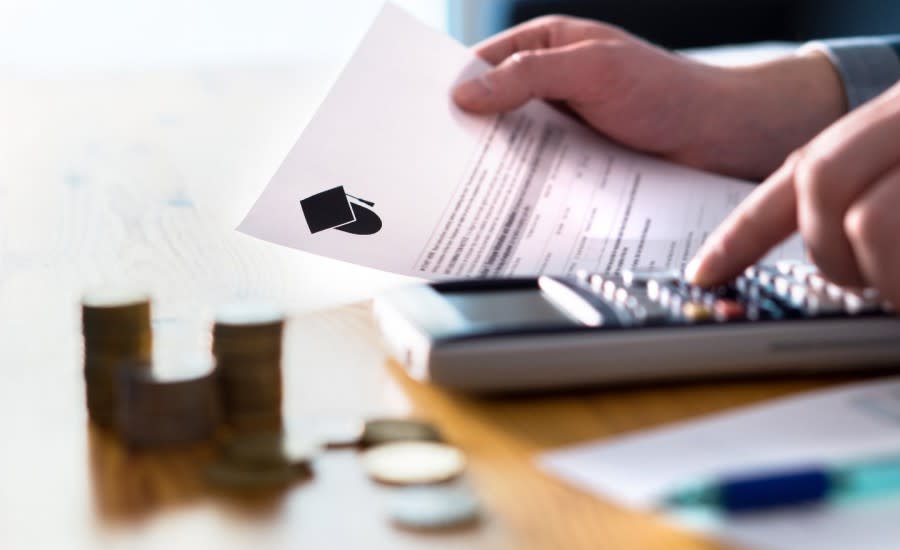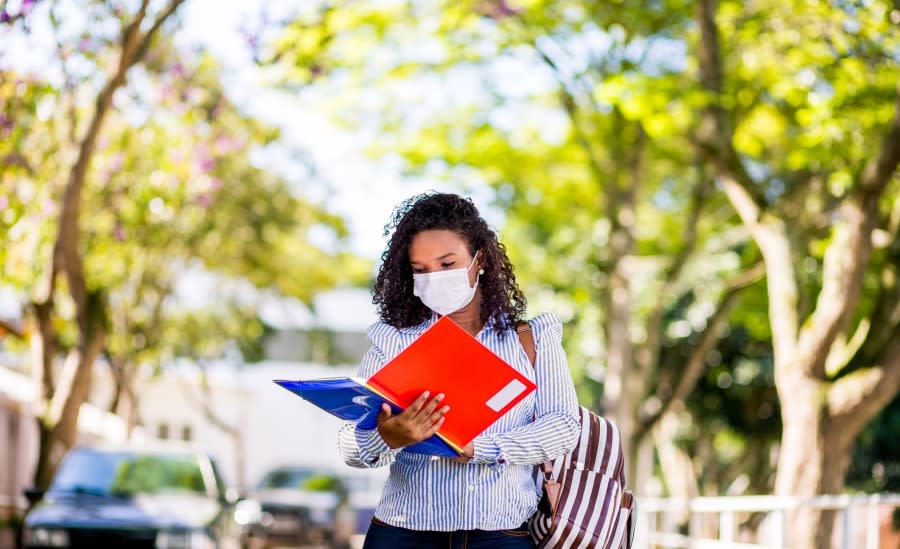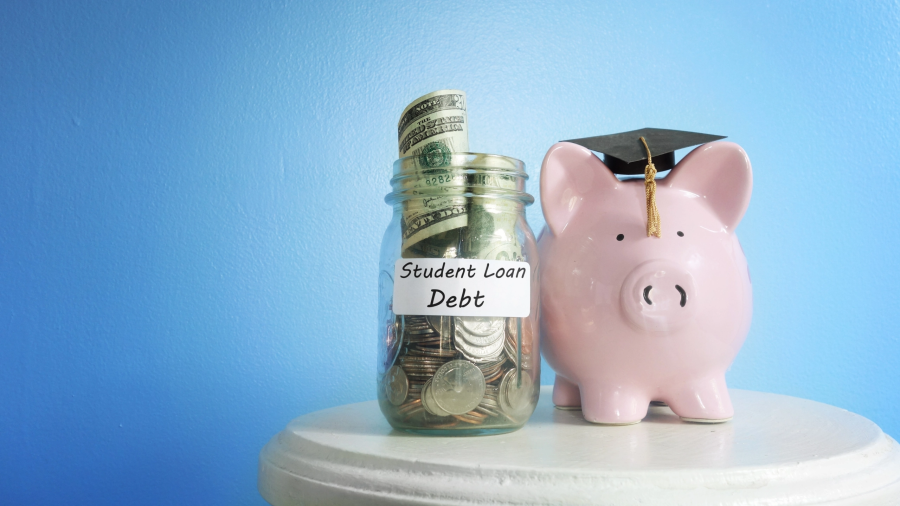Five ways student loan borrowers can prepare to apply for forgiveness
In a matter of weeks, the Biden administration is set to unveil applications for student borrowers to register for up to $20,000 in loan forgiveness.
Under the effort announced last week, some borrowers will be able to apply for up to $10,000 in forgiveness, and double that sum for Pell Grant recipients.
The administration says up to 43 million borrowers could see relief as part of the broad program, and the vast majority of these borrowers make under $75,000 per year.
Applications are expected to drop by early October, and borrowers will have a short window to apply if they want to see relief take effect before the end of the year.
Here are a few key steps student borrowers can take now to prepare for the application process.
Log into your student aid account

Getty Images
It’s been a long time since many student borrowers have had to make payments on their debt, and some new borrowers have yet to do so thanks to a years-long pandemic freeze on repayments set to lapse in the next few months.
One of the first things experts have urged borrowers to do in the coming weeks is log into their account at StudentAid.gov. There, borrowers will be able to view a breakdown of their federal loan and grant information as well as track and manage their federal loans.
“Some borrowers, depending on when they were enrolled, may have to first create an FSA [Federal Student Aid] ID to log into that student aid account,” said Rachel Gentry, director of government relations at the National Association of Student Financial Aid Administrators. “Some borrowers already have that ID from when they were students.”
Gentry stressed that borrowers should ensure now “that their contact information is all up to date” with both their loan servicers and the Education Department in their StudentAid.gov account.
The agency has said about 8 million borrowers could be eligible for automatic relief if their “relevant income data is already available” to the office. But borrowers will also be able to apply for forgiveness by early October if the agency doesn’t have that income data.
Borrowers who continued to make payments during the pandemic could also be eligible for a partial refund.
More details are expected to come out about the plan in the weeks ahead, but borrowers can also sign up for updates on the department’s main website.
Find out which loans you have

iStock
President Biden’s forgiveness plan likely won’t relieve private loan debt, experts say, though there are questions about whether borrowers with certain loans issued by private lenders will be able to see relief.
In particular, experts are awaiting more information on how the department will handle Federal Family Education Loan Program (FFELP) loans.
FFELP loans “were issued by private and state lenders, but they were guaranteed by the federal government,” Gentry explained. “So what that means is that if one of those borrowers were to default on their loan, the government would pay those private and nonfederal entities who are the lenders a substitute to kind of make up for their losses.”
“When we transitioned to 100 percent direct lending a little over a decade ago, some of those [FFELP] lenders’ portfolios were purchased by the federal government … so those loans that were purchased at that time basically became like federal loans,” she continued.
However, Gentry said some of the commercially held FFELP loans are still owned by private and state lenders.
“We’re still waiting for more information on what folks with commercially held [FFELP] loans are going to need to do to access the forgiveness, whether they there will be a way for them to not have to take action to receive forgiveness or whether they’ll have to consolidate,” she said.
Check your income eligibility

iStock
Eligibility for the relief extends to borrowers with incomes of less than $125,000 for individuals and $250,000 for married couples and heads of households.
Experts say the amount will be based on income earned in 2020 and 2021, so borrowers may need to have that information available.
“Borrowers should make sure that they have access to those tax returns so that they have a sense of what their reported income is in those years,” Katharine Meyer, a fellow for the Brown Center on Education Policy at the Brookings Institution, said.
“My read of the policy is going to be based on the lower of those two, so they should be familiar with which of their household incomes was lower in those two years,” she said.
Meyer also said borrowers shouldn’t be too concerned about a tax implication of this forgiveness program, noting “an exemption on taxing forgiven debts right now that runs through the end of 2025.”
However, there have been questions raised about borrowers who could have to pay some state taxes on the relief depending on where they reside.
Get acquainted with other programs

iStock
Many borrowers can participate in a federal income-driven repayment plan and could be eligible for Public Service Loan Forgiveness (PSLF).
The Education Department currently lists four income-driven repayment plans online that have varying durations and pay thresholds depending on factors such as level of higher education attained and income.
Under the current PSLF program, borrowers with government jobs or who work at nonprofit organizations could be eligible for forgiveness after 120 qualifying monthly payments, or a decade of consistent repayment.
Experts have urged borrowers to move quickly on applying for that program ahead of an October deadline.
“One potential area for confusion that borrowers are going to face in the coming months is the dual deadlines of submitting for potential forgiveness, and the process to apply for the temporary public service loan forgiveness program waiver,” Meyer said. “That program has a deadline at the end of Oct. 31.”
That deadline matters, Meyers said, because of the Education Department’s temporary loosening of eligibility requirements for the PSLF program that is set to lapse.
“These are things like counting prior payments that were not made under an income-driven repayment plan toward forgiveness,” she said.
“Many individuals may need to consolidate their loans in order to be eligible for that program,” she added. “That consolidation shouldn’t affect the eligibility of those loans to then get forgiven whenever that process gets rolled out. But I could see how a lot of borrowers will be confused about that.”
Prep that budget

Getty Images
Borrowers will have until the end of next year to apply for the broader forgiveness program announced last week. But they are advised to apply by Nov. 15 if they want to see the relief take effect before the end of the year — which is when the current pandemic freeze on repayment will expire.
The moratorium, which also applies to interest accrual, was extended last week through Dec. 31, marking the seventh such time the pause has been renewed since it was first enacted in March 2020.
However, the Biden administration has made clear it won’t be shooting for an eighth extension, which means many borrowers will likely have to prepare to make regular payments for the first time in years.
A report released by the Education Data Initiative earlier this year placed the average monthly student loan payment at around $460. But borrowers can pay more or less depending on their payment plan.
For example, the Education Department notes on its website that some borrowers could qualify for zero-dollar payments if they make under a certain amount.
”If you are experiencing financial difficulty and you expect to be experiencing financial difficulty, you can explore your options with a loan servicer,” student loan expert Mark Kantrowitz said. “Don’t wait until Dec. 31 to call the loan servicer.”
For the latest news, weather, sports, and streaming video, head to The Hill.

